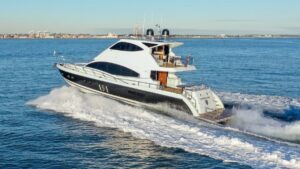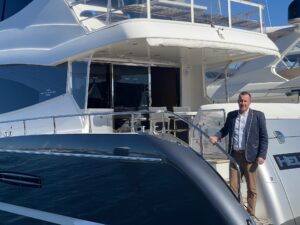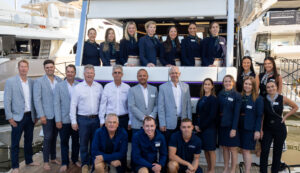Lord Howe Island is a small Australian treasure which sits at the juncture of the Coral and Tasman Seas. Its isolation means its environment is like no other most of which is now designated natural reserve. It is so special, it has received World Heritage status, and for those who dare, you can cruise to the island from Australia’s mainland so perhaps put it on your bucket list.
Lord Howe Island sits on the 31st parallel 360 nautical miles from the Gold Coast Seaway and is a remnant of an ancient volcano. Its two peaks, Mounts Gower and Lidgbird, tower out of the sea. These mountains vertically drop into coral rimmed lagoons, the largest of which is on the western side of the island. There are less than 400 residents to the island and only 400 visitors permitted at any given time.
Its rich volcanic soils plus the intersections of warm tropical waters from the north and cold from the south has created an environment unique to Lord Howe Island. There are 241 indigenous plants on the island of which 47% are only found on Lord Howe including the famous Kentia Palm. It is a haven for migratory birds, many of which use the island for breeding. Below the water, the coral supports tropical reef fish and plenty of pelagic fish can be found in the surrounding sea.
Lord Howe Island has developed a reputation as a luxury retreat due to its remoteness and pristine environment, and with luxury comes exceptional dining experiences from intimate beach picnic to fine dining.

There are certainly many reasons to cruise to Lord Howe Island yet a destination, as intriguing and alluring as this, requires planning. The first thing to know is that refuelling at Lord Howe Island is possible but is more complicated than other locations. A tanker will visit the jetty in the western lagoon yet it is expensive and if the supply barge is due, stocks can be limited. It is best to estimate your fuel consumption before departure and consider taking extra fuel as a buffer.
Additionally, you can’t just turn up at Lord Howe Island. There are limited buoys at which vessels are permitted to moor and they are allocated by the local harbourmaster depending on the individual boat’s specification. This needs to be arranged in advance. Once moored, you then access the island by tender. Aside from the mooring fees, there are also environmental levies and you must use holding tanks and not pump out to ensure the island is protected. A pristine environment is, after all, the major draw card of the island.
Finally, the trip from Australia’s east coast to Lord Howe takes about four or five days and it is best undertaken in calm sea conditions. VHF radios will not work for most of the cruise out to Lord Howe so it is recommended to have a HF radio and satellite phone. Once within reach of the island, the local port operations communicate via VHF as mobile phones do not work on the island. There are plenty of public phones and WiFi.
This trip won’t be for everyone yet for those who undertake it, it is the experience of a lifetime. And for those who would like another option, you can always fly in and enjoy one of the many hotels, villas, beach houses or holiday apartments on offer.
https://www.lhib.nsw.gov.au/services/tourism/visiting-vessels















